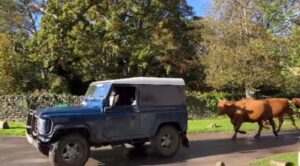Home > The many facets of conservation
The many facets of conservation
AF Member Iford Manor is a Grade II* listed house and gardens sitting amidst 1,000 acres of land in the Frome valley, on the Wiltshire-Somerset border. Owned by the Cartwright-Hignett family and run jointly by William and his wife Marianne, with a history dating back to the Domesday Book, the estate comprises numerous diversifications and renewable energy projects, as well as operating as a tourist attraction and working farm. Conservation? What does that mean, in practice, for every element of this rural business?
Conservation – the hard and soft landscape
Protecting and maintaining the house, buildings and gardens is a primary focus for both William and Marianne. Of course there’s always a commercial imperative, as the estate aims to remain profitable to ensure it’s still standing long into the future, but it’s essential to owners and visitors that the beauty of the whole valley in which the estate sits is maintained. It’s interesting to see the extent of others’ role in this.
Conservation of current and future community connections
“Maintaining the estate is only possible if we bring our communities along with us”, says William. “We greatly value our local community, the community of garden enthusiasts, the walking community for example who enjoy the three miles of footpaths on the estate, and many others.”
William feels passionately that they should play a part in connecting with, and informing, local school children. “This starts when they visit the estate for a walk round with their parents, and continues when we go to their school to do an assembly, or they come here to see our kitchen garden, learn about where food comes from, and why seasonal food is important”.
Conservation that sparks conversation
And it doesn’t stop there. Head Chef Matthew Briddon and his team use as much fresh, seasonal produce from the farm as possible, including beef from the suckler herd and vegetables from the garden. A cohort of carefully selected local, responsible and sustainable suppliers provide additional ingredients.
Preserving (pardon the pun on the cooking term) the estate’s links with local producers is just another way it seeks to maintain it’s role within the landscape. And at the heart of that is their vision for visitors to experience fresh, seasonal and good quality food. “We want everyone who visits us to be fulfilled, either by being inspired by the gardens, by enjoying a walk along the beautiful valley, or by sharing a great meal with family and friends” says William.
A cornerstone of every aspect of the estate business
Sustainability is a cornerstone of Iford’s operations; environmental, agricultural, financial and historical.

Image: readying the fields for the winter wheat crop, Iford Manor
It’s impressive how Iford manages to combine management of its diverse flora and fauna, with welcoming so many visitors to enjoy the land. A mixture of ancient woodland, Higher Level Stewardship land, summer grazed by the beef herd and a Site of Special Scientific Interest providing ideal conditions for Greater and Lesser Horseshoe bats to thrive. You may even have spotted some of these areas when they were featured on the BBC’s Wild Isles documentary with David Attenborough.
Iford firmly believes farming has to change, and is taking steps to reduce the environmental impact of what they do. For instance, the suckler herd is fed 100% on grass and home produced winter feed produced on the farm, an admiral example of ‘circular agriculture’, and one we’re hearing an increasing number of AF Members are achieving.

Image: moving cattle around the estate, Iford Manor.
Renewed look at renewable potential pays off
The estate’s largest renewable project was initiated after William’s mother had the idea to install a hydro-electric generation system in 2010. She knew the power of the river Frome had been harnessed for hundreds of years to generate an output via the watermill, but by the late 20th century this was lying dormant. The weir-head was improved and the old eel traps were refashioned in order to install an Archimedean screw.
The result is a 44kW capacity generator which produces more electricity than they can use, so not only enough to power the estate but also provides another source of income. All of the power generated goes to the grid due to the location being on the ‘wrong’ side of the valley for a private connection, but is bought back via a green energy sleeving agreement.
But it doesn’t stop there. Iford have also installed solar power on the roofs of their beef cattle sheds, and have ambitions to install more solar on less productive areas of the farm.
Hampered by infrastructural delays
Unfortunately, the solar ambitions can’t become reality at the moment. Like many other landowners, Iford Estate’s sustainable energy efforts are limited by the National Grid’s capacity not allowing further solar to be installed. It’s a hurdle which the country needs government to resolve. Land which is suitable for renewable installations is not necessarily where the power is needed – the grid needs to be upgraded so power can be generated where there is space and then transported to where it is needed.
Fit – and flexible – for the future
William’s vision for the future of the estate is clear. “We are very focussed on building flexibility into the estate, so future generations can choose how they interact with it, be they enthusiastic to stay and run the businesses, or if they want to go and get a job in New York!”
The farm is centred around a number of farmsteads, so if in future the family doesn’t want to farm, these can be separated and rented out individually. The house and gardens also comprise a number of businesses which can run together or independently.
William’s overall ethos is a fascinating combination of traditional and forward-thinking. “As estate owners, we have to be agile, and remain flexible in the day to day running of things, and that is how we approach our longer term planning as well.”



